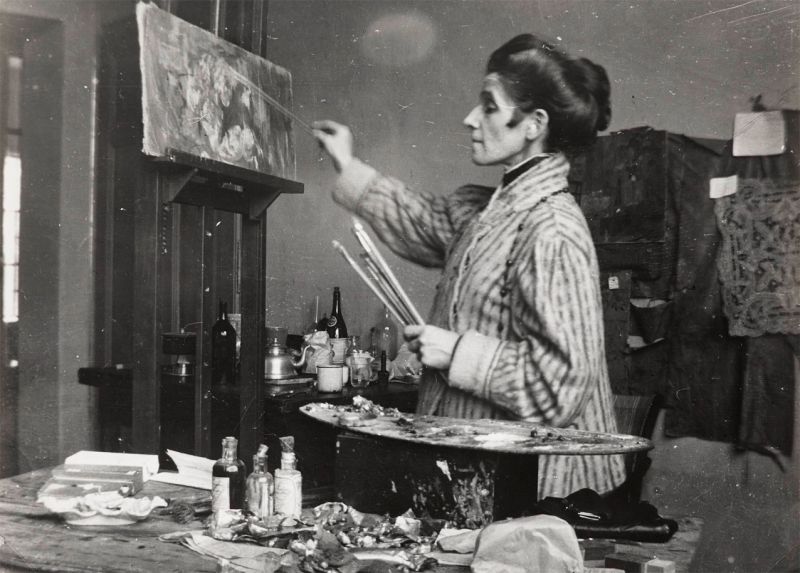Olga Boznańska. Kraków – Munich – Paris
Mediathek Sorted
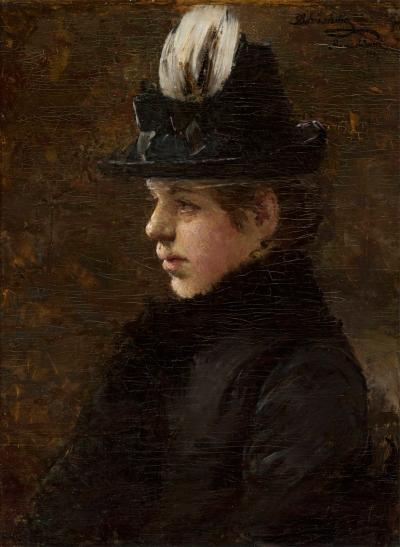
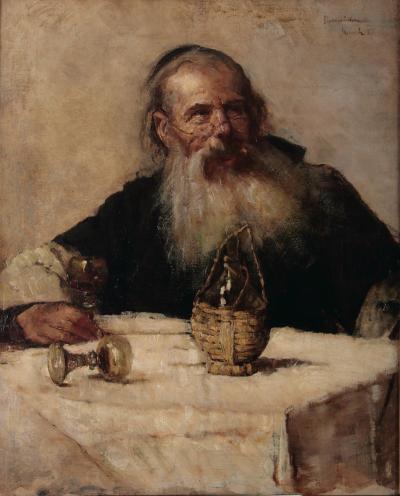
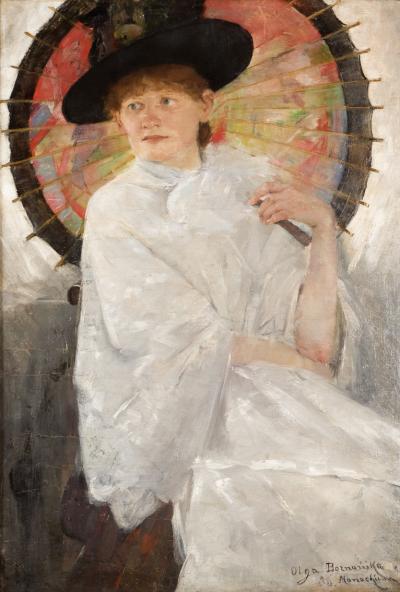
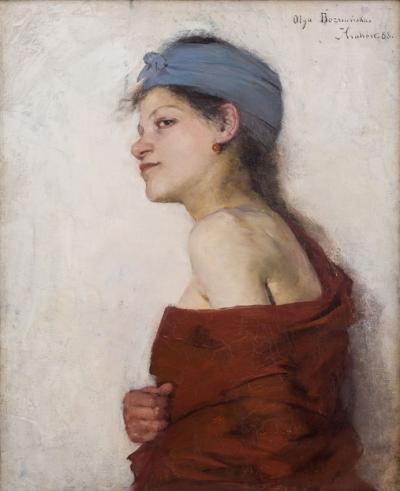
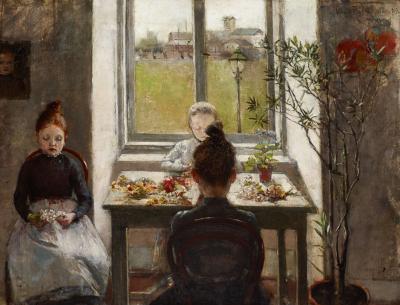
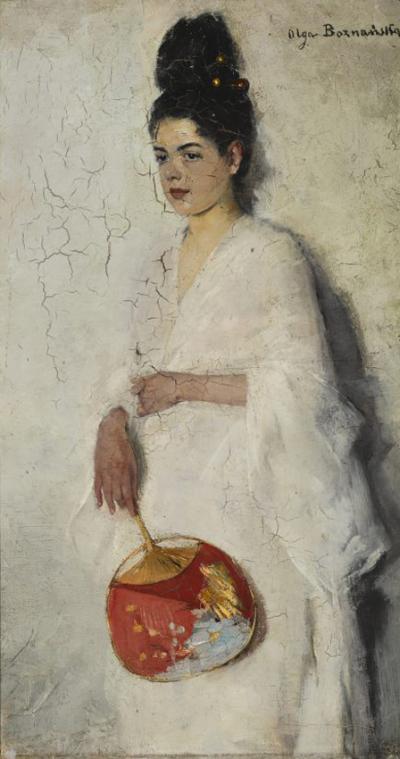

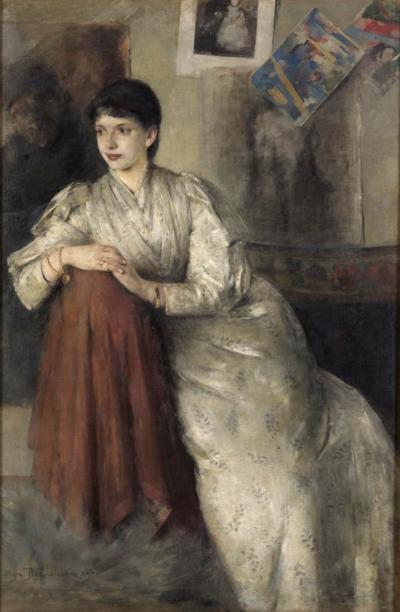
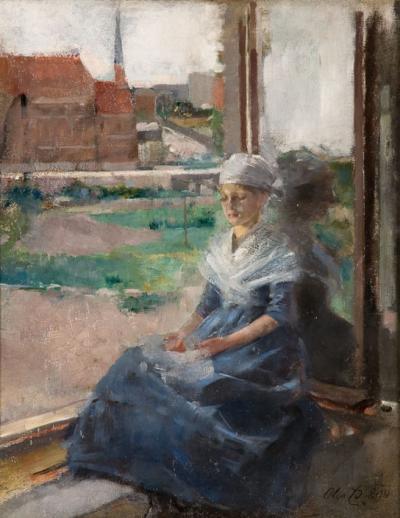
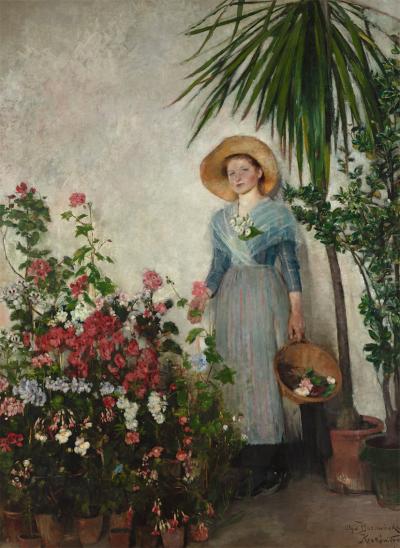
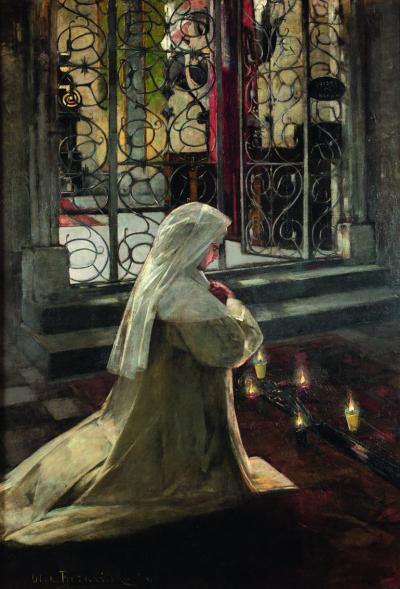
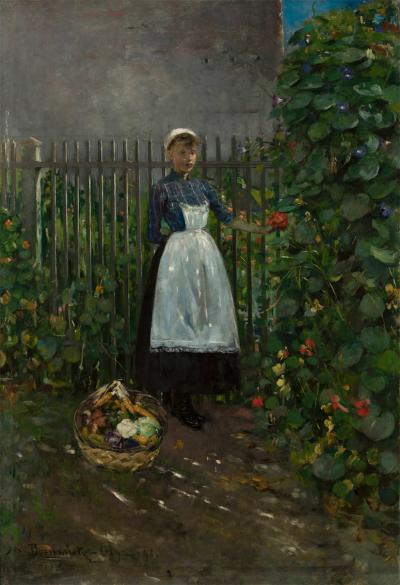
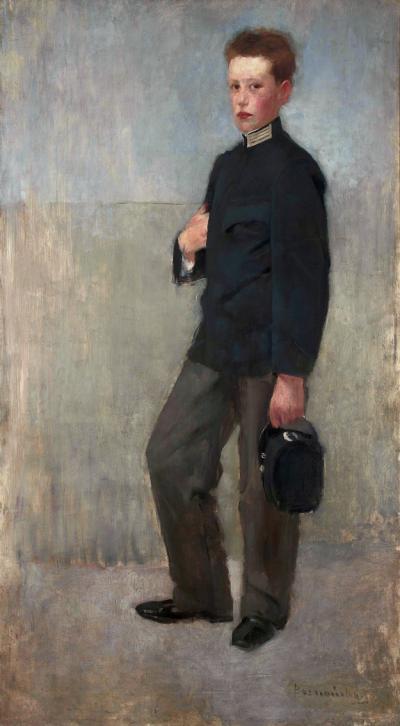
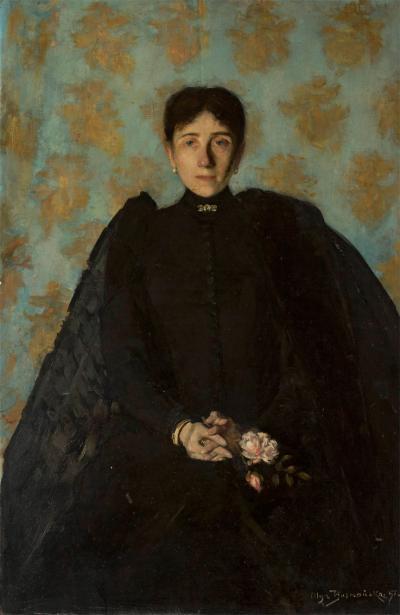
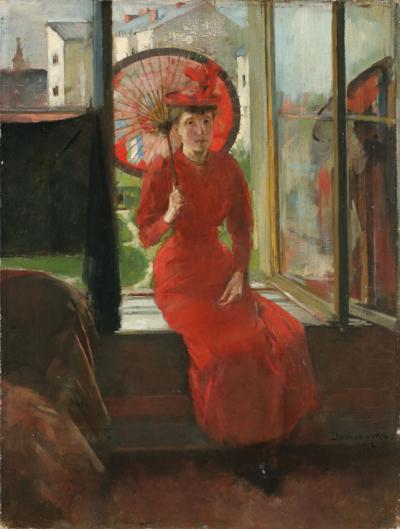
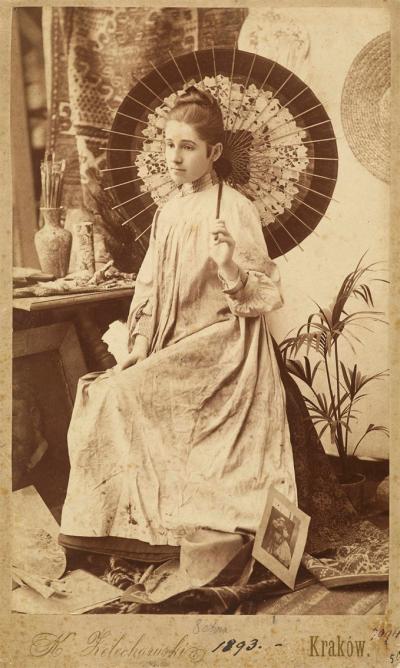
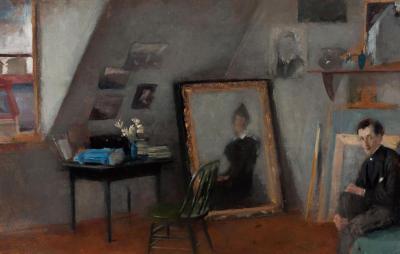
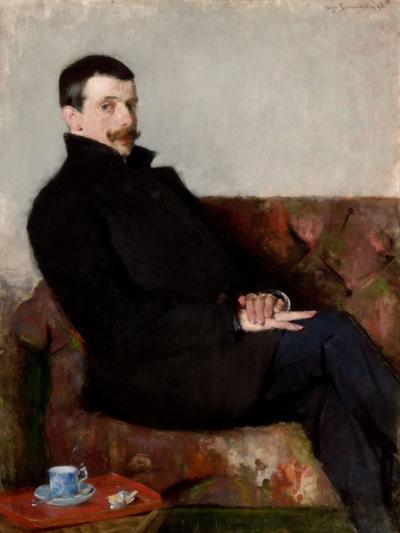
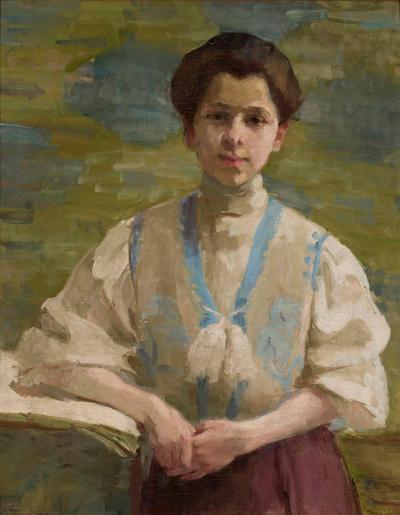
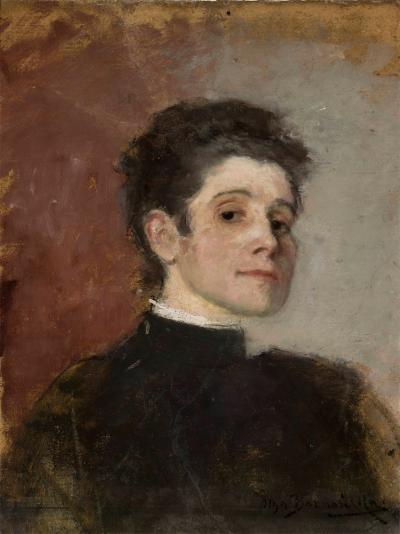
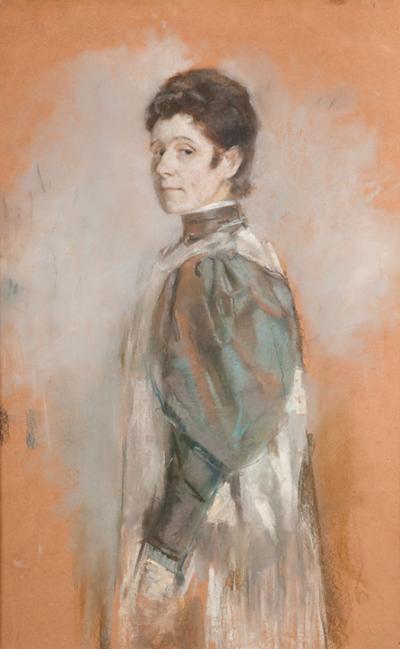
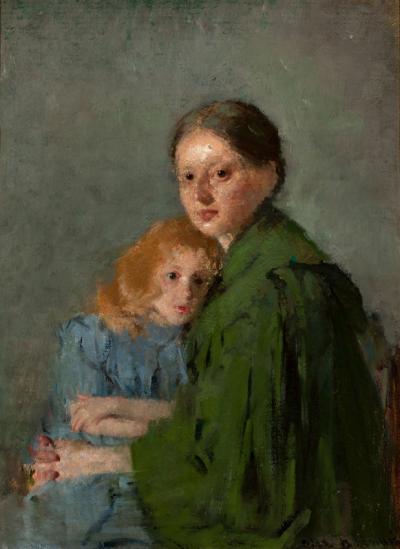
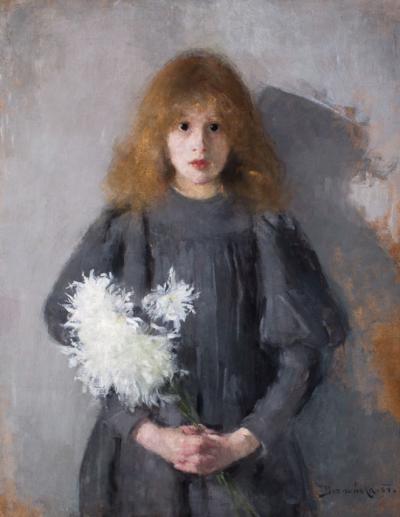
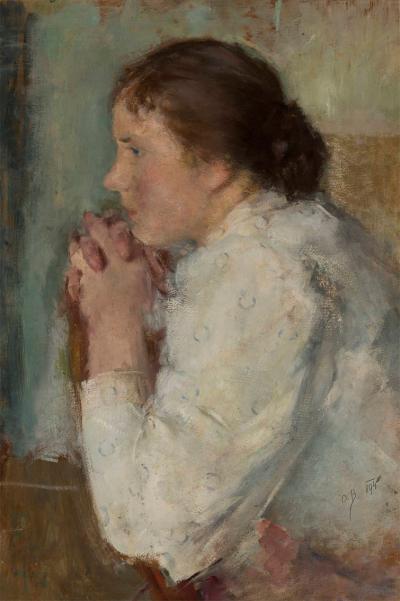
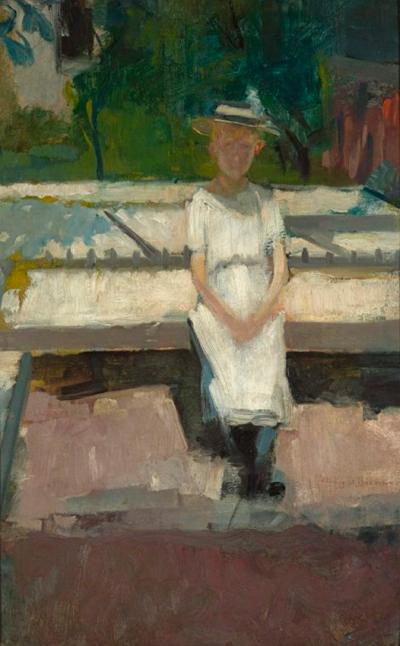
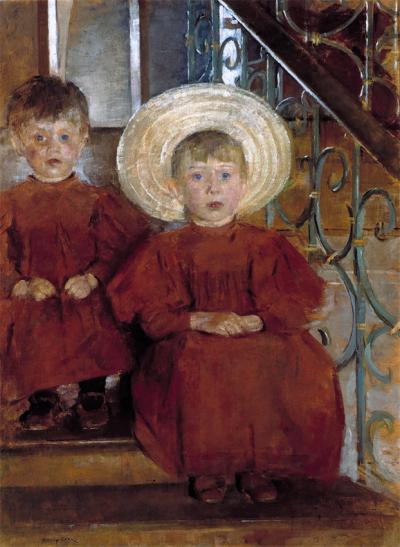

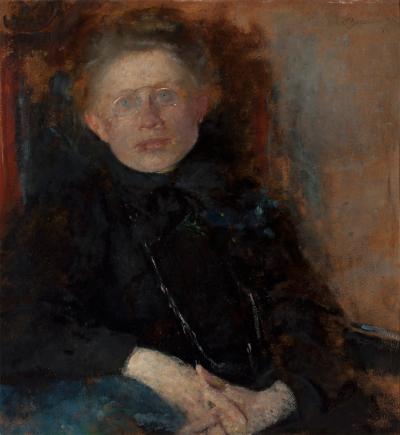
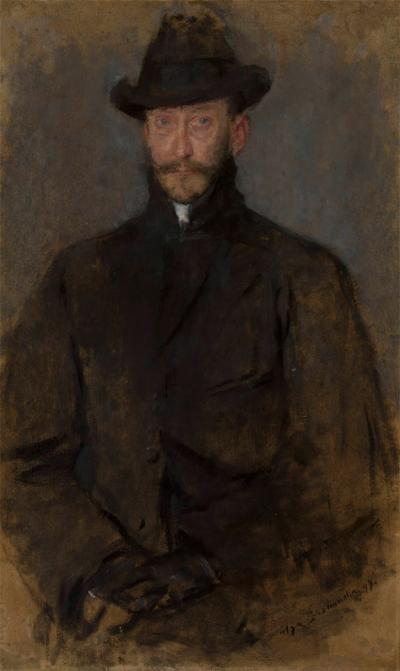
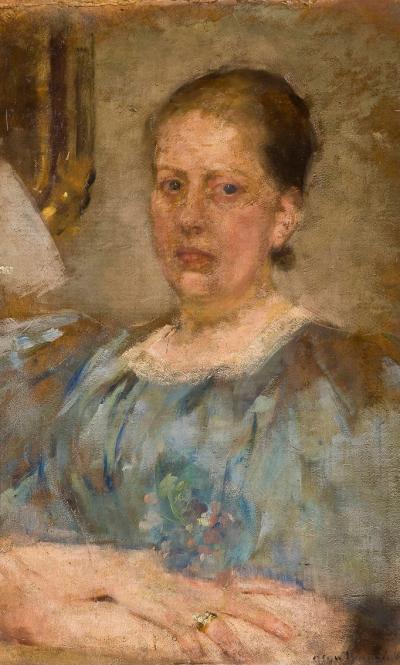
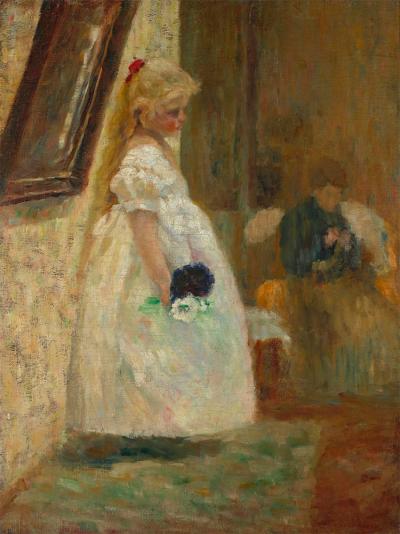

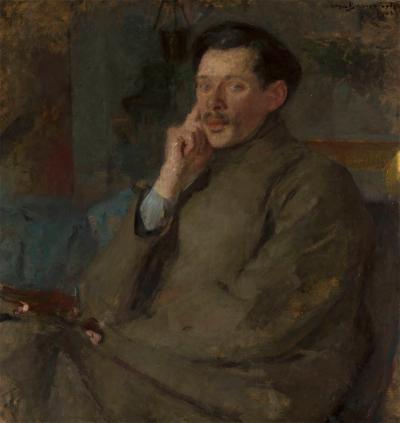
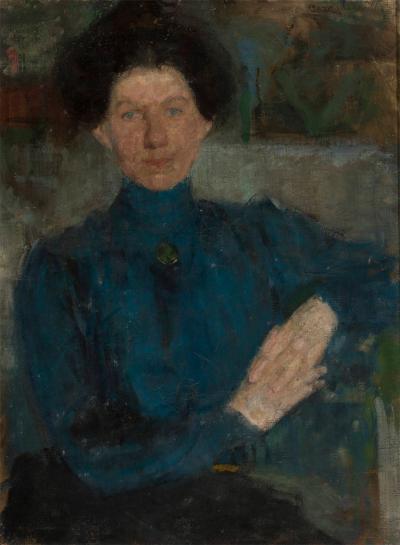
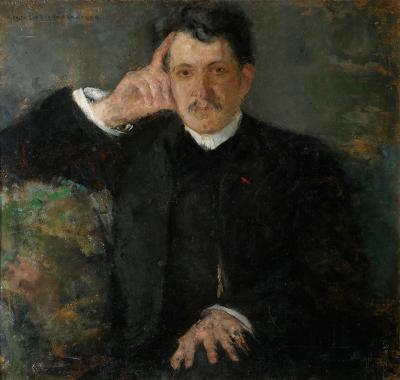
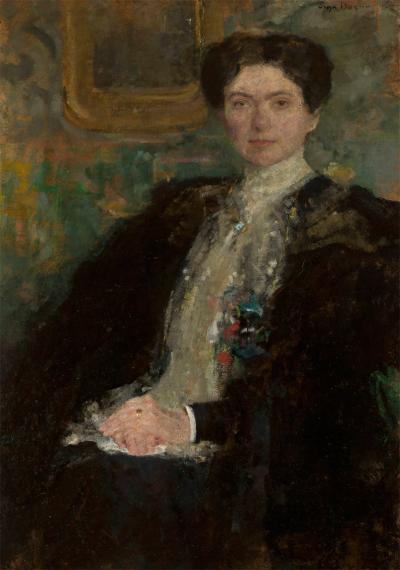
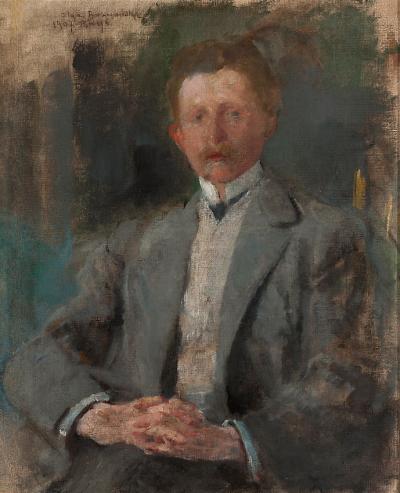
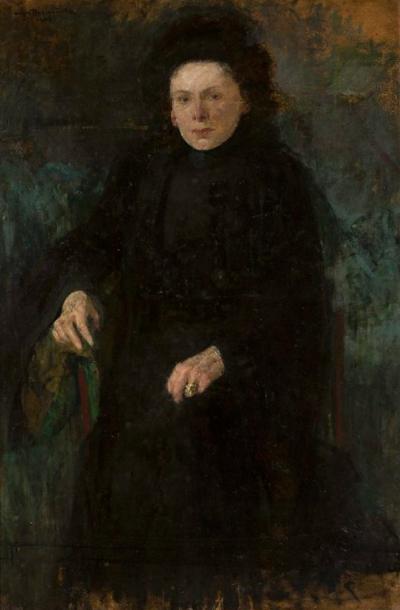
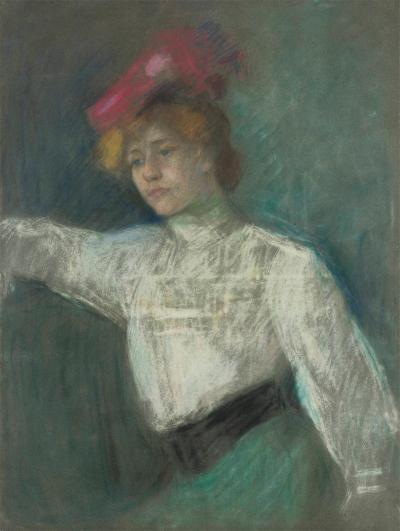
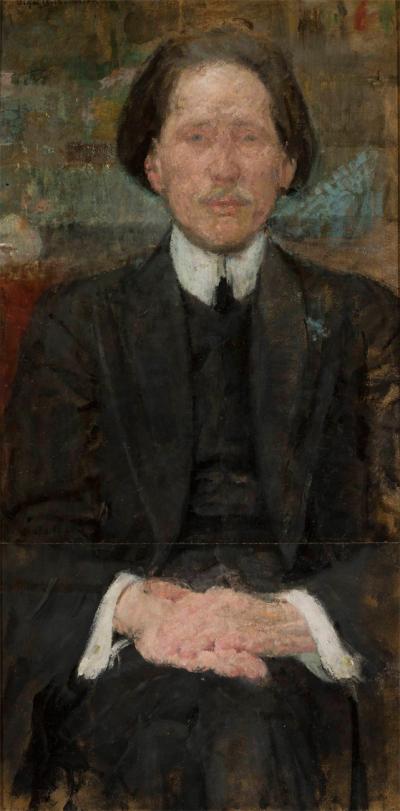


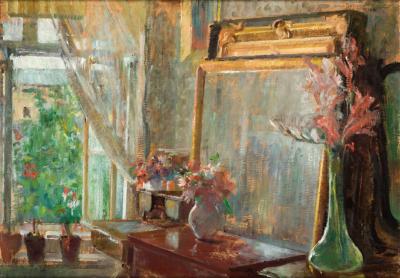
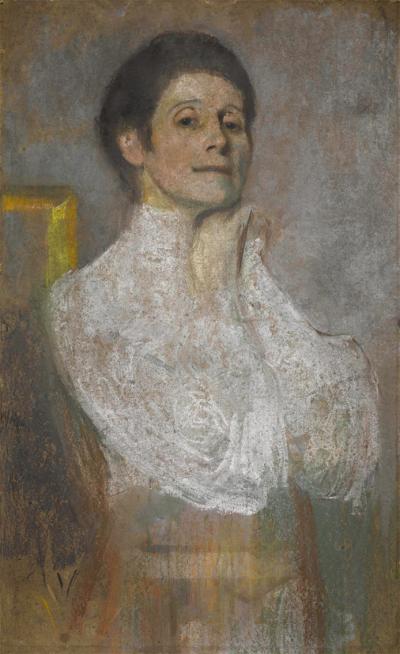
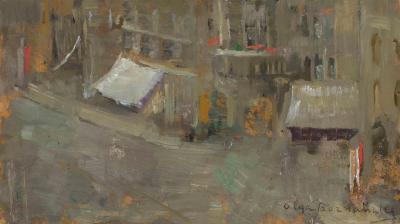
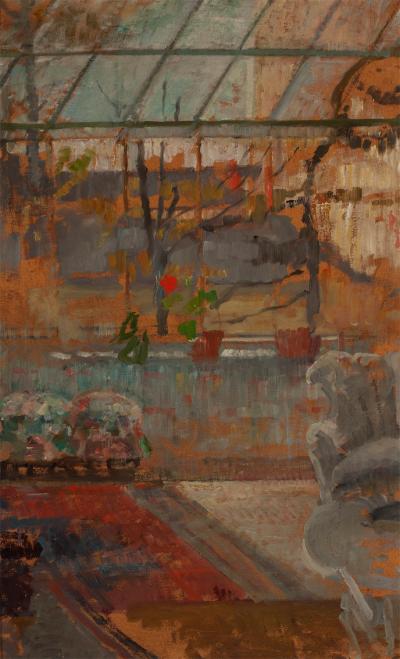
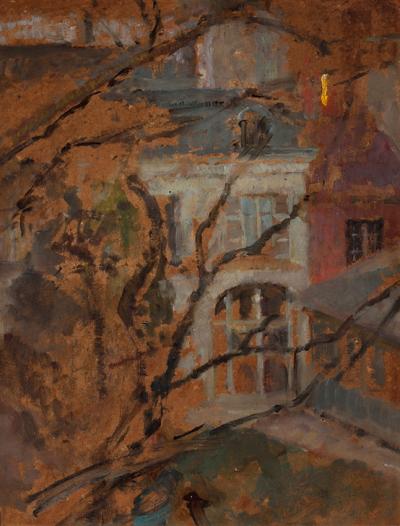
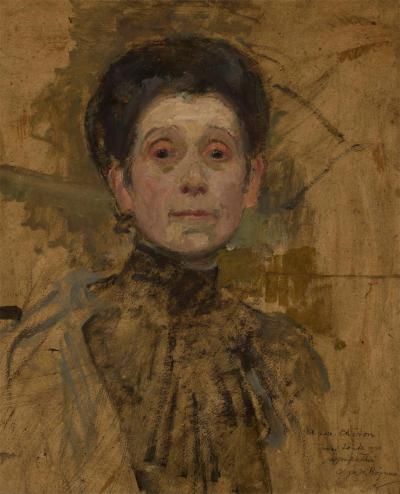
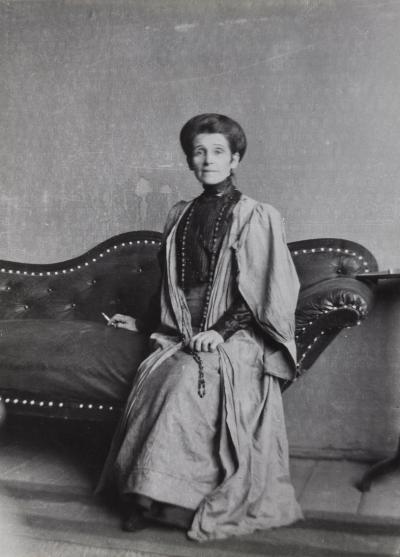
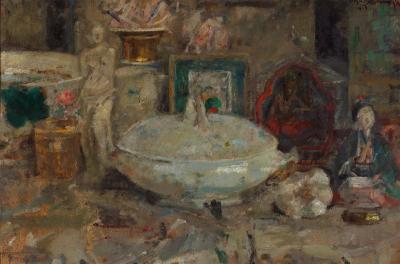
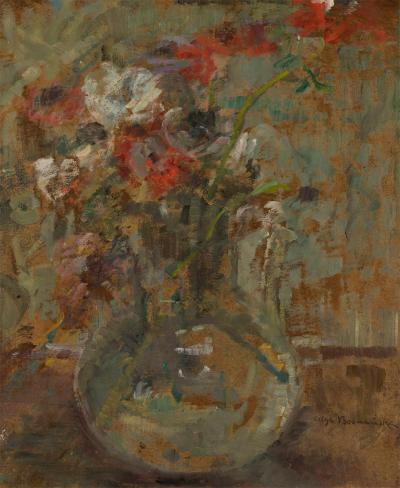
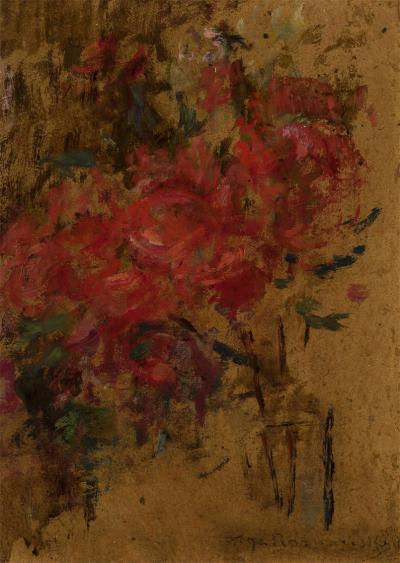
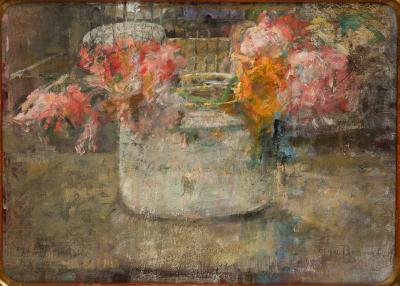

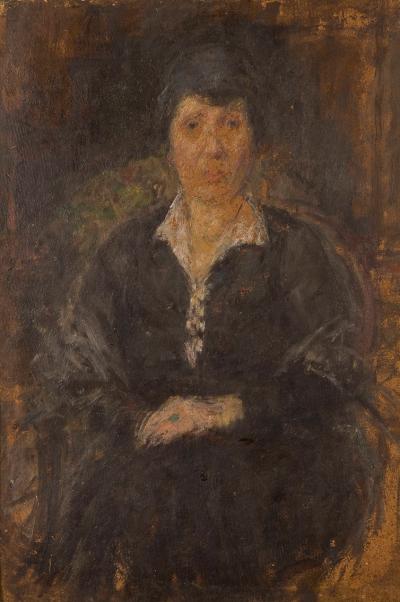
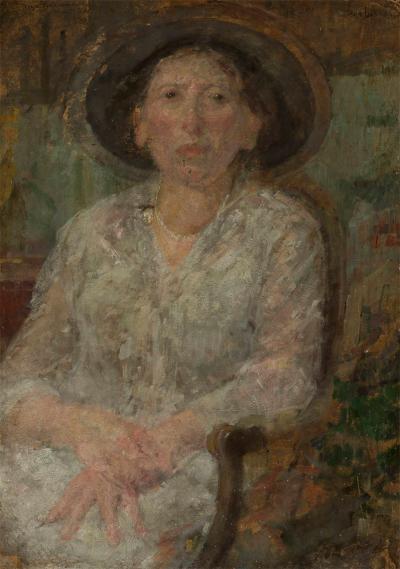
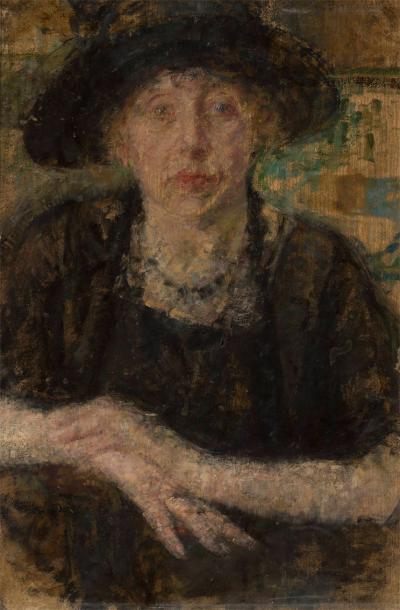
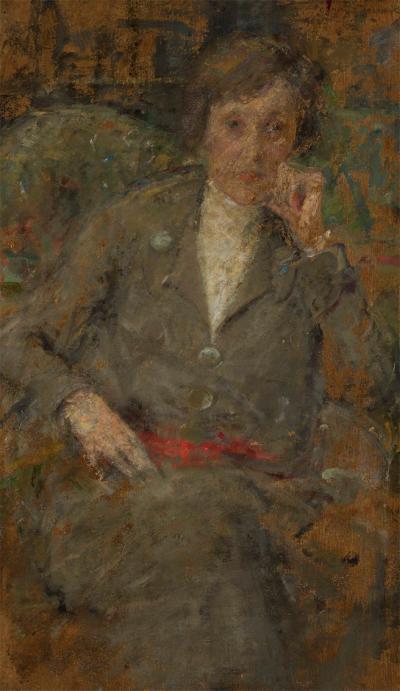
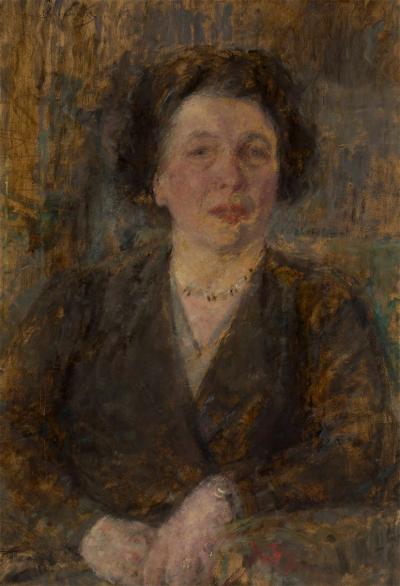
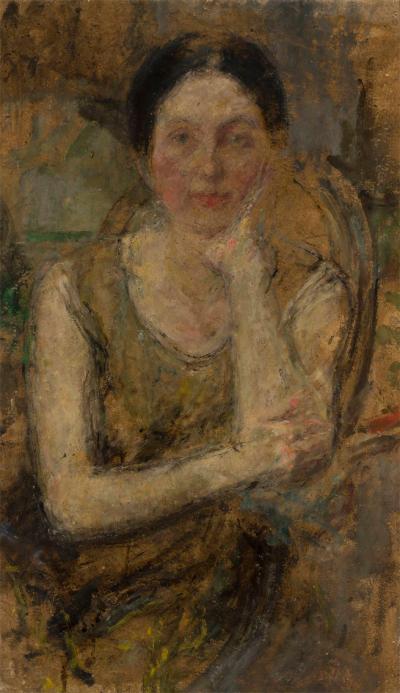


A much more private character can be seen in the “Portrait of a Woman with a Japanese Parasol” (1892, Ill. 15), which shows an unknown woman in a red dress sitting on a low windowsill. Once again an urban landscape is visible through the window. Japanese parasols can also be made out on wall decorations in the painter’s studio pictures (1890, private collection; Lublin Museum/Muzeum Lubelskie).[23] She is holding one herself on a photograph showing her in a painter’s overall in a front of a table with brushes and tubes of paint, which was taken in 1893 in Kraków (Ill. 16). The red woman might also have been painted in the window of her studio, be it in Kraków or in Theresienstraße studio in Munich, at one of Boznańska’ women friends, or at the home of her fiancé Józef Czajkowski, who began his studies at the Munich Academy in 1892 under the history and genre painter, Johann Caspar Herterich (1843-1905). Around this time Boznańska painted him in a black suit against a coloured background in the style of an open-air painting (National Museum in Kraków/Muzeum Narodowe w Krakowie).[24] It is presumably Czajkowski, who can be seen in the studio portrait made somewhat later, sitting on a green sofa on the right hand edge of the picture (Ill. 17).
Boznańska’s mother died in Krakòw in November 1892. She then travelled to Paris with her father and sister in order to visit her mother’s relatives. There she also met her cousin, a highly-regarded graphic artist by the name of Daniel Mordant (1853-1914), with whom she henceforth stayed in close contact. Czajkowski went to Paris in 1896 in order to study at the Académie Julian under Jean-Paul Laurens (1838-1921), Jean-Joseph Benjamin-Constant (1845-1902) and Whistler. In 1900 he returned to live in Kraków. On a brief visit to Paris he broke off his engagement to Boznańska because the two were still living far away from each other. He later worked as an architect, interior designer and professor at the Academy of Arts in Kraków, Wilna and Warsaw.[25]
In 1893 Boznańska contacted Paul Nauen, in whose private school she really wanted to study. Hedwig Weiß and another friend, Helena Kossobudzka, who lived in Munich from 1893 to 1900, showed Nauen one of Boznańska’s self-portraits in mourning clothes, which she had completed after the death of her mother. Nauen asked her if he could paint a portrait of her and she consented. True he destroyed the freshly painted portrait before its completion because he thought it did not do justice to the subject. That said, she returned the favour by making a portrait of Nauen (1893, Ill. 18) in a three-quarter length jacket sitting on a flowery sofa next to a small table with a Japanese tea cup in her studio in Theresienstraße. She later said that it had rained that morning and Nauen had arrived at the door with his collar turned up. “That was exactly what I wanted to paint”[26] That same year she was awarded a gold medal for her portrait of Samuel Hirszenberg’s brother shown at an exhibition staged by the Munich Artists’Cooperative. She participated in exhibitions in Prague and in the Berlin Kunsthandlung Amsler & Ruthardt, and travelled to Paris once more to visit her relatives. Her portrait of Paul Nauen was to make her famous all over Europe. In 1894 it earned her a silver medal at the Universal Exhibition of Polish Art in Lemberg/Lwów/Lviv, and a gold medal at the III International Exhibition of Art in Exhibition of Art in Vienna, which was presented to her by Archduke Karl Ludwig, the brother of the Austrian Emperor.[27] The painting was awarded second prize at the 1895 Zachęta exhibition in Warsaw 1895, and in the following year it was purchased by the National Museum in Kraków, the first of her pictures to be bought for a national collection. Her success paved the way for her as a portrait painter in Munich and in Poland.
[23] Exhibition cat. Olga Boznańska, Kraków 2014, page 113, 115; Exhibition cat. Olga Boznańska (1865-1940), Warsaw 2015, page 176 f.
[24] Illustration in the exhibition cat. Olga Boznańska, Kraków 2014, page 175
[25] For Józef Czajkowski, compare the biography in the Encyclopedia Polonica on this web portal and the article by Janusz Antos on culture.pl, http://culture.pl/en/artist/jozef-czajkowski
[26] Marcin Samlicki: Olga Boznańska, in: Sztuki Piękne, 1925/26, no. 3, pages 106-107, quoted from: Piotr Kopszak: In Munich, in: Exhibition cat. Olga Boznańska, Kraków 2014, page 42 f.
[27] ibid. page 43. Compare: Sammlungen und Ausstellungen, in: Kunstchronik. Wochenschrift für Kunst und Kunstgewerbe, Neue Folge 5, 1894, Heft 28, 14.6.1894, column 449; online: http://digi.ub.uni-heidelberg.de





















































































